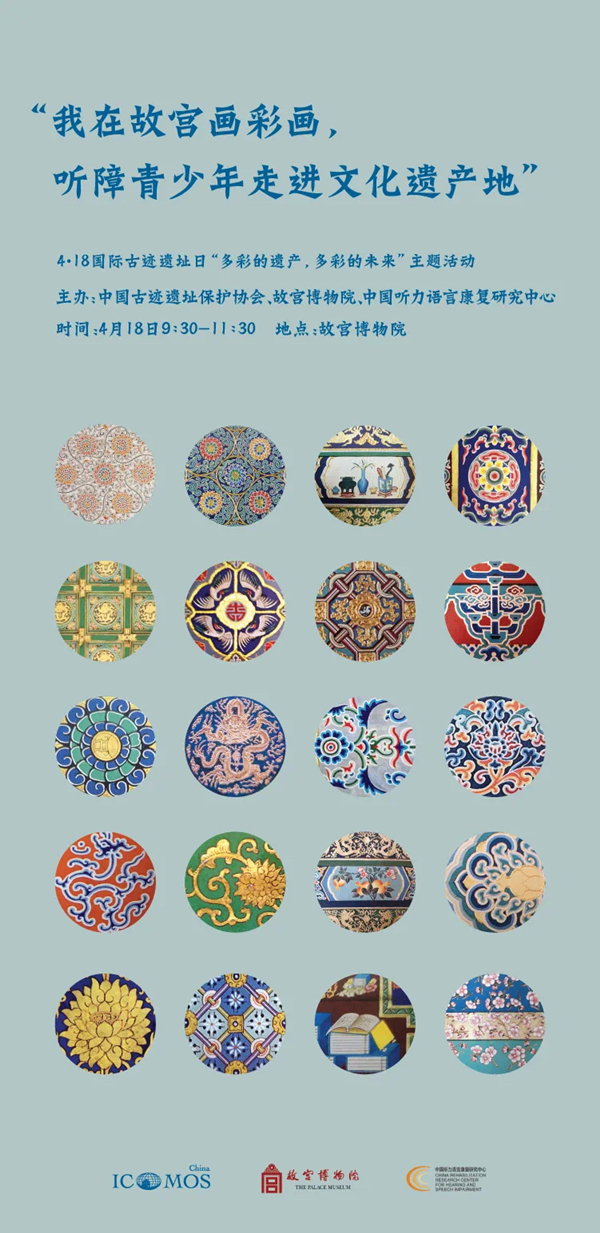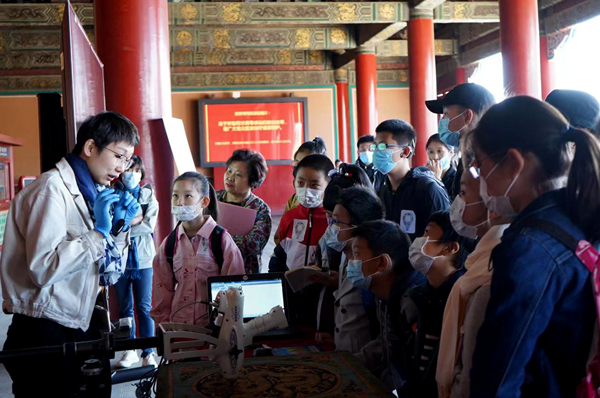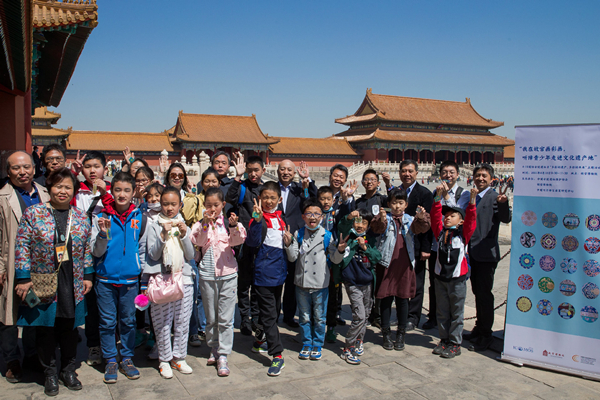On the morning of 18 April 2021, the National Cultural Heritage Administration, Chinese Committee for the International Council on Monuments and Sites (ICOMOS China), the Palace Museum, and China Rehabilitation Research Center for Hearing and Speech Impairment jointly held the “Diverse Heritages: Diverse Futures” themed “I’m Painting at the Palace Museum: Hearing-Impaired Youth Exploring the Cultural Heritage Site” for the 2021 International Day for Monuments and Sites. Fifteen hearing-impaired youths were led by Palace Museum specialists to explore the cultural heritage site, learn about colorful painted embellishments on ancient architecture, personally paint samples of the colorful embellishments, and engage in exciting exchanges with specialists in cultural heritage protection.

Song Xinchao, chairman of ICOMOS China and deputy-director of the National Cultural Heritage Administration; Wang Xudong, vice-chairman of ICOMOS China and director of the Palace Museum; and others attended the event and engaged in exchange with the children. Chai Xiaoming, vice-chairman of ICOMOS China and director of the Chinese Academy of Cultural Heritage; Chen Mingjie, director of the Beijing Municipal Administration of Cultural Heritage; Zhang Dongmei, deputy-director of China Rehabilitation Research Center for Hearing and Speech Impairment; and other experts and teachers from ICOMOS China, the Palace Museum, and China Rehabilitation Research Center for Hearing and Speech Impairment also participated in the event.
Since the 22nd UNESCO General Conference of 1983 when the International Day for Monuments and Sites was established, 18 April of each year has been dedicated to the promotion of cultural heritage protection to raise public awareness of related issues. With the international community’s need for inclusion and diversity increasing each day, the International Council on Monuments and Sites chose “Complex Pasts: Diverse Futures” as the theme for the year 2021. The theme notes how views and narratives in regard to heritage differ among individuals and groups and how more inclusive narratives should be established to more comprehensively interpret heritage and to transmit the value of heritage to more groups. Especially requiring attention is meeting the cultural heritage needs of groups with disadvantages due to economic, social, or physiological reasons in order to create more tolerant and peaceful futures.

During the event, the children came into close contact with cultural heritage protection and were given opportunities to fully express their imaginations by painting various designs of painted beam embellishments (caihua) such as pearls among auspicious plants and lingzhi mushrooms as well as making keychains as souvenirs. The children, full of curiosity towards culture, asked the specialists many questions and presented their own views on the colorful embellishments’ hierarchy, period differences, and use in present-day life. The children’s excitement created a fun and lively atmosphere.
Song Xinchao indicated how China has always made every effort to afford each citizen with equal cultural rights, allowing everyone to come into contact with, participate in, and understand cultural heritage. These rights are not limited by age, gender, income, or employment disparities. The theme of the International Day for Monuments and Sites is to allow the story of cultural heritage to realize transmission “accessibility” in each person’s life and to, moreover, promote mutual cultural appreciation and create a common destiny for humanity, this international expression of Chinese wisdom.

Wang Xudong noted how the Palace Museum has continuously advanced “accessibility” for visitors with an aim to afford more people with a more diverse contact with, love for, and protection of heritage. He hopes this tour of the Palace Museum will allow the children to feel the beauty of the painted embellishments, discover the beauty of cultural heritage, and continue to create wonderful lives. He encouraged the children to come in contact with, study, and pass on the outstanding traditional culture of China, grow strong and healthy, and welcome diverse future lives through diverse heritage.
Zhang Dongmei expressed how this “Hearing-Impaired Youth Exploring the Cultural Heritage Site” activity allowed the children to anticipate a more abundant and diverse future and adapt to life in society by participating in this cultural protection practicum. She hopes the event will lead to close ties between model cultural industries and endeavors of disabled persons, promote the idea of cultural heritage “accessibility”, advocate for allowing disabled persons assimilation into society, and open up cultural sites for all people.
The new president of ICOMOS Ms Teresa Patricio expressly presented a speech for the event via video to take part with Chinese colleagues.

Translated and edited by Adam J. Ensign and Kang Xiaolu



